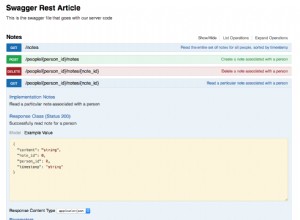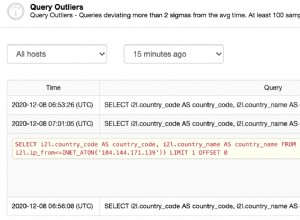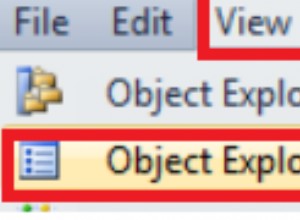Es gibt 100 Pivot-Beispiele auf SO, also wollte ich einen Weg zeigen, wie Sie dies tun könnten, was nicht so gut wie Pivot ist, aber für Ihre Instanz funktioniert. Es passt möglicherweise nicht zu Ihrem gesamten Datensatz und basiert nur auf Ihren Beispieldaten.
Beachten Sie, dass Ihre Testdaten nicht die Ergebnisse liefern, die Sie behaupten. Wahrscheinlich nur ein Tippfehler auf der Beilage.
create table #Nodes(
Caption varchar(max),
IP_Address varchar(max),
NodeID varchar(max)
);
insert into #Nodes (Caption, IP_Address, NodeID)
values
('dev-srvr', '10.0.0.1', '29023'),
('prod-srvr', '10.0.2.1', '29056'),
('test-srvr', '10.1.1.1', '29087');
create table #Volumes(
Caption varchar(max),
NodeID varchar(max)
);
insert into #Volumes (NodeID, Caption)
values
('29023', '/'),
('29023', '/boot'),
('29023', '/dev/shm'),
('29023', '/home'),
('29056', '/'),
('29056', '/var'),
('29056', '/opt'),
('29087', '/tmp');
select
n.Caption,
n.IP_Address,
v.Caption as Volume
from #Nodes n
inner join #Volumes v
on n.NodeID=v.NodeID
where IP_Address like '10.0%'
;with cte as(
select
n.Caption,
n.IP_Address,
v.Caption as Volume,
ROW_NUMBER() over (partition by n.caption, IP_Address order by n.caption) as RN
from #Nodes n
inner join #Volumes v
on n.NodeID=v.NodeID
where IP_Address like '10.0%')
select
x.caption,
x.IP_Address,
max(Volume1) as Volume1,
max(Volume2) as Volume2,
max(Volume3) as Volume3,
max(Volume4) as Volume4
from(
select
Caption,
IP_Address,
case when RN = 1 then Volume end as Volume1,
case when RN = 2 then Volume end as Volume2,
case when RN = 3 then Volume end as Volume3,
case when RN = 4 then Volume end as Volume4
from cte) x
group by x.Caption, x.IP_Address
drop table #Nodes
drop table #Volumes
DYNAMISCHES PIVOT VERWENDEN
create table #Nodes(
Caption varchar(max),
IP_Address varchar(max),
NodeID varchar(max)
);
insert into #Nodes (Caption, IP_Address, NodeID)
values
('dev-srvr', '10.0.0.1', '29023'),
('prod-srvr', '10.0.2.1', '29056'),
('test-srvr', '10.1.1.1', '29087');
create table #Volumes(
Caption varchar(max),
NodeID varchar(max)
);
insert into #Volumes (NodeID, Caption)
values
('29023', '/'),
('29023', '/boot'),
('29023', '/dev/shm'),
('29023', '/home'),
('29056', '/'),
('29056', '/var'),
('29056', '/opt'),
('29087', '/tmp');
DECLARE @DynamicPivotQuery AS NVARCHAR(MAX)
DECLARE @ColumnName AS NVARCHAR(MAX)
select
n.Caption,
n.IP_Address,
v.Caption as Volume,
'Volume' + cast(ROW_NUMBER() over (partition by n.caption, IP_Address order by n.caption) as varchar(16)) as Cname
--ROW_NUMBER() over (partition by n.caption, IP_Address order by n.caption) as RN
into #staging
from #Nodes n
inner join #Volumes v
on n.NodeID=v.NodeID
where IP_Address like '10.0%'
--Get distinct values of the PIVOT Column
SELECT @ColumnName= ISNULL(@ColumnName + ',','')
+ QUOTENAME(Cname)
FROM (SELECT DISTINCT Cname FROM #staging) AS Cname
--Prepare the PIVOT query using the dynamic
SET @DynamicPivotQuery =
N'SELECT Caption, IP_Address, ' + @ColumnName + '
FROM #staging
PIVOT(MAX(Volume)
FOR Cname IN (' + @ColumnName + ')) AS PVTTable'
--Execute the Dynamic Pivot Query
EXEC sp_executesql @DynamicPivotQuery
drop table #Nodes
drop table #Volumes
drop table #staging




